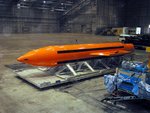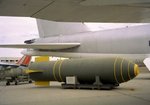Kurfürst
Staff Sergeant
like the smilie Flyboy J
However if a B17 could only reasonably expected to carry 6000 lbs compared to a Lancasters load of up to a 22000 lbs Grand Slam well it does put things into perspective doesn't it....
Lancasters that carried the Grand Slam were specially modified with a lot of stuff removed from the plane. So I don't quite get why compare that to standard-issue B-17s, which were carrying a lot more weight in the form of defensive armament OTOH..
Not to mention the Grand Slam would be of little operational use for conventional task bombers are normally engaged in, and that it was used only at the very end o the war..
It's and odd and unfair comparison.



